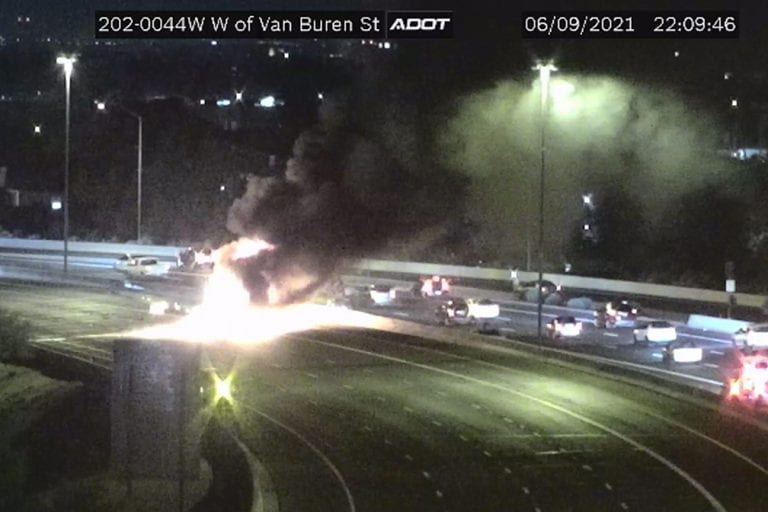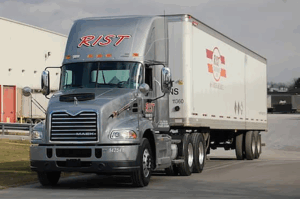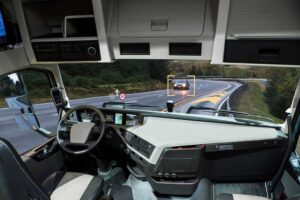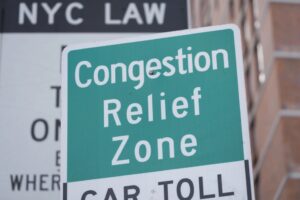DETROIT — In a reversal from Trump administration policies, U.S. auto safety regulators say they will move to require or set standards for automatic emergency braking systems on new heavy trucks.
The Department of Transportation, which includes the National Highway Traffic Safety Administration (NHTSA), announced the change June 11 when it released its spring regulatory agenda.
It also will require what it said are rigorous testing standards for autonomous vehicles, and set up a national database to document automated-vehicle crashes.
The moves by the administration of President Joe Biden run counter to the agency’s stance under President Donald Trump. NHTSA had resisted regulation of automated-vehicle systems, saying it didn’t want to stand in the way of potential life-saving developments. Instead, it relied on voluntary safety plans from manufacturers.
NHTSA had proposed a regulation on automatic emergency braking in 2015 before Trump took office, but it languished in the regulatory process. The agency says it has been studying use of the electronic systems, and it plans to publish a proposed rule in the Federal Register in April 2022. When a regulation is published, it opens the door to public comment.
“We are glad to see NHTSA finally take the next step in making large trucks safer by mandating AEB,” said Jason Levine, director of the Center for Auto Safety, which was among the groups that petitioned for the requirement in 2015.
“Unfortunately, at this rate, it will still be years until the technology that could help stop the 5,000 truck crash deaths on our roads is required,” he said in an email.
A trade group representing independent big rig drivers says the technology isn’t ready for heavy vehicles and can unexpectedly activate without reason.
“Our members have also reported difficulties operating vehicles in inclement weather when the system is engaged, which has created safety concerns,” the Owner-Operator Independent Drivers Association said in a statement.
The association says that while the technology is still being perfected, legislators and regulators shouldn’t set time frames for requiring it on all trucks.
However, the Insurance Institute for Highway Safety, a research group supported by auto insurers, found in a study last year that automatic emergency braking and forward collision warnings could prevent more than 40% of crashes in which semis rear-end other vehicles. A study by the group found that when rear crashes happened, the systems cut speeds by more than half, reducing damage and injuries.
Cathy Chase, president of Advocates for Highway and Auto Safety, another group that sought the regulation from NHTSA in 2015, said the agency is moving too slowly by not publishing the regulation until next year.
“I don’t understand the delay,” she said. “I know that might sound impatient, but when people are dying on the roads, 5,000 people are dying on the roads each year, and we have proven solutions, we would like to see more immediate action.”
In 2016, NHTSA brokered a deal with 20 automakers representing 99% of U.S. new passenger vehicle sales to voluntarily make automatic emergency braking standard on all models by Sept. 1, 2022. But that deal did not apply to big rigs.
The announcement of the requirements comes two days after four people were killed when a milk tanker going too fast collided with seven passenger vehicles on a Phoenix freeway. At least nine people were injured.
The U.S. National Transportation Safety Board (NTSB), which investigates crashes and makes recommendations to stop them from happening, said Thursday it would send a nine-person team to investigate the Phoenix crash. The agency said it would look at whether automatic emergency braking in the truck would have mitigated or prevented the crash.
Since at least 2015 the NTSB has recommended automatic emergency braking or collision alerts be standard on vehicles.
At present, there are no federal requirements that semis have forward collision warning or automatic emergency braking, even though the systems are becoming common on smaller passenger vehicles.
The systems use cameras and sometimes radar to see objects in front of a vehicle, and they either warn the driver or slow and even stop the vehicle if it’s about to hit something.
By Tom Krisher, AP Auto Writer
The Associated Press is an independent global news organization dedicated to factual reporting. Founded in 1846, AP today remains the most trusted source of fast, accurate, unbiased news in all formats and the essential provider of the technology and services vital to the news business. The Trucker Media Group is subscriber of The Associated Press has been granted the license to use this content on TheTrucker.com and The Trucker newspaper in accordance with its Content License Agreement with The Associated Press.









When are all these idiots in the so called for highway safety going realize that most of deaths on highway is called by speeding 4 wheelers that cutoff big rigs stay at home keep ur noses out of trucking industry because you dont know yalls ass from Apple Butter bout safety they merge on highway expected big rigs to stop they so impatient slower trucks are more accident will happen
I agree. People who make these types of changes dont know “JACK” about trucking.
These so called saftey requirments are the distractions.
I agree that this is still along way from getting the bugs out. It was just 2 days ago when the automatic braking system applied itself at 1 am on an empty highway. I left my seat and was lucky not to have gone thru the windshield.
Next demand governed truck speed at 55 mph immediately across entire USA, then only allow allowed trucks to travel at nite wen there is less traffic, in the right lane only no matter wat, with zero tolerance. With severe fines wen caught. Also no radios or cb which causes distraction.
they need to keep the 4-wheelers off the highways completely or put them on a road to themselves each year cars get faster, nobody says anything about that 4 wheeler drivers should be made to take parts of the the big rig test on their drivers test and make them do it before they re-new most of them don’t even know how to drive a car let alone know anything about a big truck
I’d bet Most of the rear ends accidents are probably distracted driving?🤔
Commenters blaming four-wheelers for all the mayhem upon our highways seem to forget that at the end of their driving shifts most truck drivers become one of the much maligned four-wheelers. 👮♂️😇
What am I going to do in the winter, when it’s snowing, someone in a car, in the left lane, speeding like always, cuts in front of me as soon as they get like 2 feet of clearance and the computer automatically mashes the brakes? If you think losing control and going sideways in a car in the winter time is scary, you ain’t experienced s*** until it’s in a semi truck. Nothing scarier then seeing a wall coming around at you full swing. I’m sure someone will respond with “well you shouldn’t even be driving if it’s snowing”. Yeah right. This is trucking.
Maybe there’s a silver lining to climate change as I’d rather deal with rain.
I had so called new and better truck that would detect the divider on some exit ramps as an object too close and would brake. It drove me nuts. I got out of that truck real quick.